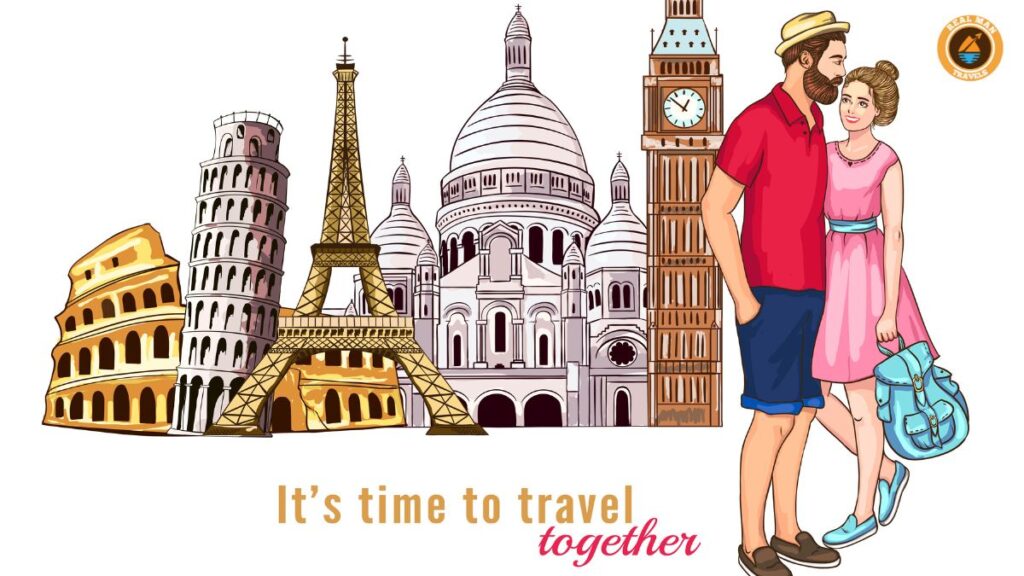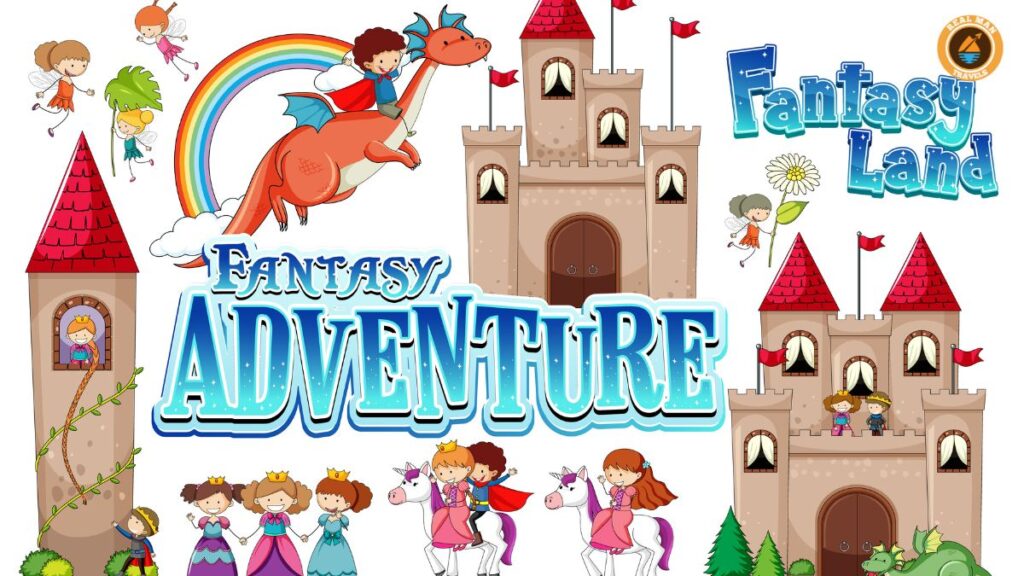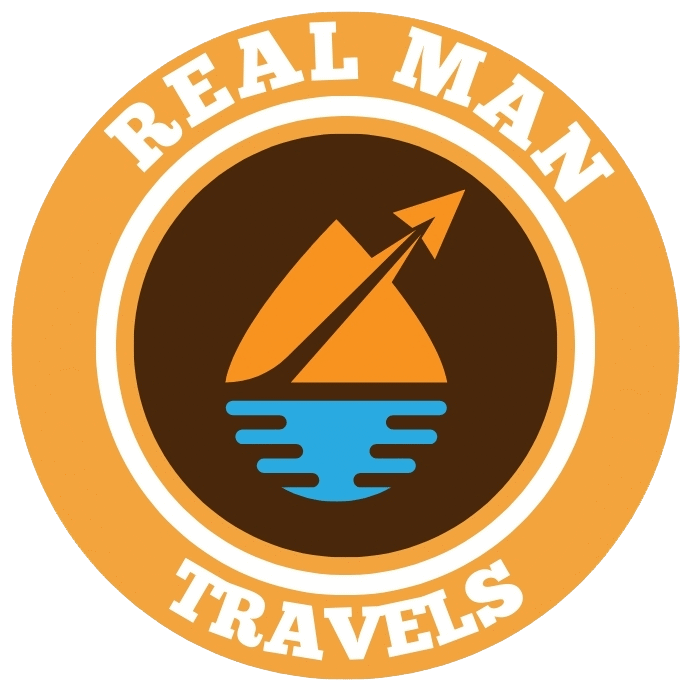Intro: How to Plan a Walt Disney World Trip
How to plan a walt disney world trip planning a journey to Walt Disney World can feel as elaborate as the plot of a timeless fairy tale. With four significant theme parks, two water parks, numerous hotels, and an ever-evolving list of tourist attractions and dining experiences, the sheer variety of choices can be overwhelming. Much like any grand adventure, the secret to success lies in thoughtful preparation. This guide is your roadmap, created to help you navigate every choice point and craft a genuinely wonderful trip for 2025.

We will guide you through the entire process, from initial dreams to the final, comprehensive travel plan. You will discover the best times to visit, how to set a realistic budget, and the tricks to securing those desirable dining appointments. Whether you are a novice visitor or a seasoned veteran, this comprehensive plan will guarantee your 2025 Walt Disney World journey is as smooth and remarkable as possible.
The First Step: When Should You Visit Disney World in 2025?
Your travel dates are the single essential decision you will make. They affect everything from crowd levels and weather to park hours and rates. Understanding the seasonal fluctuations of Walt Disney World is crucial for a successful trip.
Comprehending Crowd Calendars and Seasonal Pricing
Disney World employs a dynamic pricing model for park tickets and resort hotel accommodations. This suggests prices vary based on demand. High-demand periods, such as holidays and school breaks, will be the most expensive and crowded.
Peak Season (Highest Crowds & Prices):.
- Martin Luther King Jr. Weekend (Mid-January).
- Presidents’ Day Weekend (Mid-February).
- Spring Break (Mid-March to Mid-April, particularly around Easter).
- Memorial Day Weekend (Late May).
- Summer (June through mid-August).
- Thanksgiving Week (Late November).
- Christmas to New Year’s (Late December to early January).
Value Season (Lowest Crowds & Prices):.
- January (after New Year’s week).
- Late August through September.
- Early December (before the holiday rush).
Shoulder Season (Moderate Crowds & Prices):.
- February (omitting Presidents’ Day weekend).
- Early May.
- October through mid-November (leaving out Halloween and Thanksgiving).
Factoring in Weather and Special Events.
Florida weather is another key factor to consider. Summers are humid and hot, with near-daily afternoon thunderstorms. Winters are pleasant and moderate, though occasional cold fronts can bring cold evenings.
- Spring (March-May): Generally enjoyable weather conditions; however, be prepared for Spring Break crowds. Epcot International Flower & Garden Festival is a significant highlight.
- Summer (June-August): Hot, damp, and rainy. Crowds are high due to school holidays—a strategy for midday breaks to escape the heat.
- Fall (September-November): The hazard of typhoons is greatest in September and October; however, crowds are lower. You can delight in the Epcot International Food & Wine Festival and Mickey’s Not-So-Scary Halloween Party.
- Winter (December-February): Ideal weather; however, holiday crowds are immense. Mickey’s Very Merry Christmas Party and the Epcot International Festival of the Arts are popular events.
- Our 2025 Recommendation: For the best balance of workable crowds and enjoyable weather conditions, consider visiting in late April/early May (after Spring Break, but before the summer heat) or late October/early November (for fantastic weather conditions and festive fun).
Building Your Disney Vacation Budget.
A Walt Disney World vacation is a considerable investment. Developing a comprehensive budget plan early also helps avoid surprises and enables you to prioritize what matters most to your household. Four primary classifications will determine your overall cost.
1. Accommodations: Where to Stay.
Your choice of lodging is one of the most significant budgeting aspects. Disney uses three tiers of on-property resorts, each with its own rate point and perks.

- Value Resorts (e.g., All-Star Resorts, Pop Century): The most budget-friendly alternative. They provide fun, epic themes, food courts, and bus transportation. They are fantastic for families on a tighter budget who plan to spend much of their time in the parks.
- Moderate Resorts (e.g., Caribbean Beach, Coronado Springs): A middle ground, offering more elaborate theming, bigger rooms, table-service dining establishments, and updated swimming pools with slides. Some offer alternative transportation options, such as the Disney Skyliner.
- Deluxe Resorts & Villas (e.g., Grand Floridian, Contemporary, Polynesian Village): The premium tier. These resorts boast elegant amenities, sophisticated theming, signature dining, and the very best transport alternatives, including monorail and walking access to parks.
- On-Property vs. Off-Property: Staying on-site offers valuable advantages, such as early theme park entry and complimentary transportation. Nevertheless, staying off-property in a neighboring hotel or trip rental can offer more space and features for a lower rate, especially for larger groups. Weigh the expense savings against the convenience of being inside the “Disney bubble.”.
2. Park Tickets: Your Key to the Magic.
Disney World ticket prices are date-based. The more days you purchase, the lower the per-day expense.
- Base Ticket: Allows you to get into one amusement park each day.
- Park Hopper Option: Lets you “hop” between multiple style parks on the same day after 2 PM. This includes versatility but comes at an extra expense.
- Park Hopper Plus Option: Includes Park Hopper benefits plus a specific number of visits to the water parks (Typhoon Lagoon, Blizzard Beach) and other smaller attractions.
- Water Park and Sports Option: A cheaper alternative that includes water park access to your base ticket without the park-hopping function.
How many days do you require? A common suggestion is 4 to 6 days. This allows for one complete day at each of the four main style parks (Magic Kingdom, Epcot, Hollywood Studios, Animal Kingdom), with an additional day or two for rest, resort hopping, or reviewing a preferred park.
3. Food: The Disney Dining Plan and Beyond.
Food is a considerable and often underestimated cost. Disney offers a diverse range of dining options, from quick-service counters to fine dining experiences.
- Quick-Service Dining: Counter-service meals are the most budget-friendly option, usually costing $15-$ 20 per person.
- Table-Service Dining: Sit-down restaurants require appointments and can vary from $30 to over $70 per person.
- Character Dining: A popular experience where you dine with Disney characters. These are prix-fixe meals and are amongst the more expensive dining alternatives.
- The Disney Dining Plan: The Disney Dining Plan returned in 2024, allowing visitors to pre-pay for meals and treats. There are two main choices for 2025: the Quick-Service Dining Plan and the basic Disney Dining Plan (which includes table-service meals).
4. Additions: Souvenirs, Genie+, and Transportation.
Don’t forget to plan for the extras that add up rapidly.
- Genie+: Disney’s paid “skip-the-line” service. The cost varies daily, per park. You should factor this into your daily budget plan if preventing long waits is a concern.
- Individual Lightning Lane (ILL): For the most popular one or two rides in each park, you can buy à la carte access to the Lightning Lane. This is different from Genie+.
- Souvenirs & Incidentals: Set a particular budget for merchandise, snacks, and other impulse purchases.
- Airfare/Transportation: If you are flying, track flight rates to Orlando International Airport (MCO). Account for gas, tolls, and potential overnight stops if driving.
The 6-Month Planning Timeline: A Step-by-Step Guide.
With your dates and budget established, it’s time to start booking. Disney World operates on a specific timeline, and understanding these crucial dates is essential for securing the best appointments.
180+ Days Out: Research and Big Decisions.
This is your strategic planning phase.
- Finalize Travel Dates: Lock in your dates based upon your crowd and weather preferences.
- Set Your Budget: Create a detailed spreadsheet to track all possible costs.
- Choose Your Resort: Decide between staying on-property or off-property. Select your preferred resort if on-property.
- Decide on a Travel Agent: A specialized Disney travel representative can be a valuable, complimentary resource. Disney pays them and can assist you in navigating promotions and making reservations on your behalf.
60 Days Out: Dining Reservations and Enchanting Extras.
This is an important day on your planning calendar.
- Make Advance Dining Reservations (ADRs): Guests remaining at a Disney Resort hotel can make dining bookings for their whole trip (as much as 10 days) beginning 60 days before their check-in date. All other visitors can reserve 60 days in advance of each day.
- Booking Strategy: Be online or on the phone at 6:00 AM Eastern Time exactly 60 days out. Focus on the most popular restaurants initially, such as Cinderella’s Royal Table, Space 220, and ‘Ohana. It’s often much easier to secure tough appointments for later in your trip.
- Book Enchanting Extras: This is likewise when you can book other experiences like constructing a lightsaber at Savi’s Workshop or getting a royal remodeling at Bibbidi Bobbidi Boutique.
- One month out: Finalize Park Plans and Customize MagicBands.
The details start coming together now.
- Create a Flexible Daily Itinerary: Outline which park you will visit every day—factor in Early Theme Park Entry and any dining appointments you have. Don’t overschedule; leave room for spontaneity.
- Customize MagicBands: If you’re staying on-property, you can buy reduced MagicBand+ gadgets through your My Disney Experience account. Please do this at least 11 days before your journey to guarantee they are delivered to your Home.
- Arrange Transportation: If flying, book your airport transport. Although Disney’s Magical Express service has ceased to exist, numerous shuttle bus services, such as Mears Connect and The Sunshine Flyer, continue to operate from MCO. Ride-sharing is likewise a popular alternative.
The Week Before: Pack and Confirm.
Your trip is practically here!
- Check the Weather Forecast: Review the 10-day forecast for Orlando and make final packing changes.
- Pack Your Bags: Remember fundamentals like comfortable shoes, sun block, portable battery chargers, and rain ponchos.
- Confirm All Reservations: Double-check your dining, flight, and resort confirmations through the My Disney Experience app.
- Link Everything to My Disney Experience: Ensure your tickets, resort appointment, and Family members are all connected in the app. This app will serve as your command center throughout your journey.
Mastering the Parks: Strategies for Each Location.
Each of Disney’s four amusement parks has a unique personality and requires a different touring strategy. Understanding the design, crucial attractions, and Genie+ top priorities is necessary for maximizing your day.
Magic Kingdom: The Quintessential Disney Experience.
Magic Kingdom is the heart of Walt Disney World, Home to Cinderella Castle and traditional attractions.

- Must-Do Attractions: Peter Pan’s Flight, Seven Dwarfs Mine Train, Haunted Mansion, Pirates of the Caribbean, TRON Lightcycle/ Run.
- Genie+ Strategy: This is the park where Genie+ offers the most value. Prioritize reserving Lightning Lanes for Peter Pan’s Flight, Jungle Cruise, and Space Mountain.
- Individual Lightning Lane (ILL): TRON Lightcycle/ Run and Seven Dwarfs Mine Train are typically provided as ILL purchases. If these are top priorities, purchasing access may be a worthwhile investment.
- Rope Drop Strategy: Arrive at least 45-60 minutes before the park opens (or before Early Entry begins). Head straight for either Fantasyland (Peter Pan’s Flight, Seven Dwarfs Mine Train) or Tomorrowland (Space Mountain, TRON) to ride popular destinations with lower waits.
Epcot: A Celebration of Culture and Innovation.
Epcot is a massive park divided into two distinct areas: World Celebration/Nature/Discovery and the World Showcase.
- Must-Do Attractions: Guardians of the Galaxy: Cosmic Rewind, Remy’s Ratatouille Adventure, Test Track, Frozen Ever After.
- Genie+ Strategy: Genie+ is extremely useful here. Focus on Remy’s Ratatouille Adventure, Test Track, and Frozen Ever After. You may get to book two of these three.
- Individual Lightning Lane (ILL): Guardians of the Galaxy: Cosmic Rewind utilizes a Virtual Queue system and is also offered as an ILL purchase. You can not just wait in a standby line for this ride.
- Rope Drop Strategy: If you have Early Entry, head directly to Test Track or Remy’s Ratatouille Adventure. Go straight to Frozen Ever After in the Norway structure if starting in the World Showcase.
Hollywood Studios: A Galaxy of Adventure.
This park is Home to Star Wars: Galaxy’s Edge and Toy Story Land, making it exceptionally popular with high demand for its headliner destinations.
- Must-Do Attractions: Star Wars: Rise of the Resistance, Slinky Dog Dash, The Twilight Zone Tower of Terror, Mickey & Minnie’s Runaway Railway.
- Genie+ Strategy: Absolutely vital for an efficient day. Slinky Dog Dash is the top concern and frequently lacks the Lightning Lane schedule within minutes of the 7:00 AM reserving window.
- Individual Lightning Lane (ILL): Star Wars: Rise of the Resistance is the park’s ILL tourist attraction. This is the most complex and immersive trip at Disney World, and acquiring an ILL is the only method to guarantee a journey without a multi-hour wait.
- Rope Drop Strategy: Arrive extremely early. Visitors will sprint to either Slinky Dog Dash or Rise of the Resistance. Select one and get ready for a considerable wait for the other later in the day.
Animal Kingdom: A World of Natural Wonder.
Animal Kingdom is a perfectly themed park celebrating nature and conservation. It’s big and spread out, so plan for a lot of walking.

- Must-Do Attractions: Avatar Flight of Passage, Kilimanjaro Safaris, Expedition Everest, Na’vi River Journey.
- Genie+ Strategy: Helpful, however, less necessary than at Hollywood Studios or Magic Kingdom. Prioritize Kilimanjaro Safaris and Na River Journey.
- Individual Lightning Lane (ILL): Avatar Flight of Passage is the park’s ILL selection. This is among the most popular rides at Walt Disney World, and purchasing an ILL can save you hours of waiting.
- Rope Drop Strategy: The entire park population hurries to Pandora– The World of Avatar at opening. If you are not purchasing the ILL, head straight to Flight of Passage. An alternative is to go to Kilimanjaro Safaris first, as the animals are typically more active in the morning.
Frequently Asked Questions About Planning a Disney Trip.
1. Is a travel representative worth it for a Disney journey?
For novice visitors or those overwhelmed by the details, a customized Disney travel representative is invaluable. Their services are complimentary (Disney pays them a commission), and they can handle booking, use discounts instantly, and offer expert recommendations. For seasoned travelers who enjoy the preparation procedure, scheduling directly is likewise a fantastic choice.
2. Just how much should I budget for a 5-day Disney World journey in 2025?
A spending plan can vary extensively; however, a moderate quote for a Family of four for a 5-day journey (staying at a Moderate resort with Park Hopper tickets and using the basic Dining Plan) might range from $6,000 to $8,000, omitting airfare. A value-focused trip might cost around $4,500, while a luxurious experience could easily exceed $10,000.
3. Is Genie+ required to have fun?
No, it is not strictly essential. You can still have a wonderful holiday without it by utilizing Early Theme Park Entry, staying late, and being strategic about which lines to join and when. Nevertheless, throughout busy seasons, Genie+ is highly recommended if you wish to experience a large number of attractions without investing the majority of your day in standby lines.
4. What is the very best way to get from the Orlando airport (MCO) to my Disney resort?
The most typical options are ride-sharing services (such as Uber/Lyft) and dedicated airport shuttle buses, like Mears Connect and The Sunshine Flyer. Ride-sharing is frequently faster and more direct, while shuttles can be more affordable for smaller groups. Renting a vehicle provides the most versatility but comes with day-to-day parking costs at the resorts and style parks.
5. Can I bring my own food and drinks into the Disney parks?
Yes! Disney enables visitors to bring their own food and non-alcoholic beverages into the parks. This is a fantastic method to save money on treats and water. Be sure to avoid glass containers and products that require heating or refrigeration.
Planning a journey to Walt Disney World is a journey in itself. By taking a methodical approach, setting a clear budget, and understanding the crucial timelines, you can change a potentially complex procedure into an exciting part of the experience. Use this guide as your compass, and you will be well on your way to creating an incredible, unforgettable, and masterfully planned holiday in 2025.

